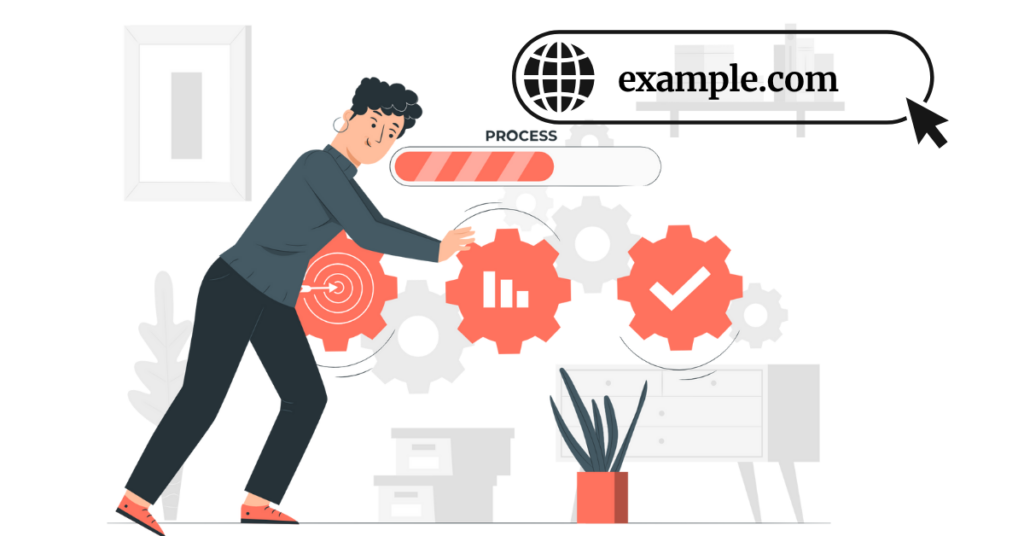Have you ever woken up to find your website gone, no pages, no files, no way to bring it back?
It happens more often than you think. Studies show that over 60% of small businesses that suffer data loss shut down within six months.
And in most cases, the cause isn’t hacking; it’s recovery and backup mistakes that put your website at risk or destroy your restore process.
Backups sound boring until you need one. Because in 2025, the real cost of a broken website isn’t just downtime, it’s lost trust.
When your site crashes, gets infected, or your server failure wipes your files, the difference between a few minutes of downtime and total business loss depends on how you planned your website backup and website recovery.
Let’s break down the six biggest recovery and backup mistakes that put your website at risk, causing data loss, or making recovery impossible. And how to fix them before it’s too late.
1) Missing Daily or Offsite Backups
As a site owner, you should realize that skipping backups is like driving without insurance. Missing backups or keeping all your copies on one device puts your site at serious risk.
When your site crashes, you need a clean website restore point to bring it back. Without it, even your hosting provider can’t help.
A website backup strategy should include both cloud backup and local backup. The cloud gives you remote safety, while the local copy helps with fast recovery speed.
Industry data shows that 35% of websites have no automated backups, and over 25% lose their data after malware attacks because they have no off-site backup.
That’s huge. You can’t depend on luck.
Here’s what you should do:
- Set a clear backup frequency, daily or at least weekly, depending on updates.
- Store backups in off-site storage for protection from server failure or malware infection.
- Always use backup encryption to protect sensitive files.
When you automate, verify, and monitor your backups, you eliminate manual backup errors and ensure fast recovery.
2) No Rollback Option After Updates
Website updates are necessary, but they’re also risky. One wrong plugin update or theme change in your CMS (Content Management System) can break the site.
That’s why not having a rollback option is one of the worst recovery and backup mistakes that puts your website at risk.
A rollback means going back to a stable version of your site using file versioning or version control and rollback tools. Without it, you’re stuck trying to rebuild from scratch.
Experts recommend setting snapshot backups before major changes. These are instant save points that make it easy to restore your website within minutes.
If you only depend on your host’s manual backups, you might lose hours, or worse, face incomplete backups or expired backup versions.
Set your automation level high:
- Enable automatic daily backups before updates.
- Use incremental backups; only new changes get saved, reducing load and saving space.
- Keep a short retention policy for old versions to maintain storage location balance.
Having a rollback option boosts data integrity, shortens downtime duration, and ensures your site’s backup success rate stays high.
3) Slow Restoration Process After Downtime

When your site goes down, speed is everything. A slow disaster recovery process doesn’t just frustrate users, it damages your brand and kills trust.
Research from Google shows that 53% of visitors leave a site that takes longer than 3 seconds to load. Now imagine being offline for hours or days due to a slow data recovery process.
Most delays happen because of failed restore attempts, missing test runs, or poorly configured disaster recovery plans.
Recovery should be a process, not a panic.
A strong data recovery plan defines how fast you can recover lost website data and return to normal operations. That’s where RTO (Recovery Time Objective) and RPO (Recovery Point Objective) come in:
- RTO is how long it takes to get your site live again.
- RPO is how much data you can afford to lose before recovery.
If you’ve never tested your hosting backup services, you’re gambling with downtime. Regularly test, verify, and monitor your backups. Combine full backups for complete safety with incremental backups for fast restores.
Also, invest in reliable RAID storage or cloud and local backup setups that improve the redundancy level and prevent corrupted backup files.
The faster your recovery speed, the lower your downtime duration, and the higher your customers’ trust.
4) No Uptime Monitoring or Performance Alerts
You can’t fix what you don’t see. Many businesses don’t realize their site has been down for hours until a client calls.
That’s what happens when you don’t have uptime monitoring or performance alerts.
Downtime costs real money. This study shows the average cost of website downtime is $14,056 per minute for many organizations (and up to $23,750 for large enterprises).
That means even a small unmonitored backup process can lead to serious losses.
Set up a monitoring system that checks your server uptime, load speed, and backup health. Tools like UptimeRobot or your hosting provider’s panel can send alerts when your site slows or goes offline.
Tie that into your backup automation process so you can instantly restore when something breaks.
If you don’t monitor, you’ll never know when your backup frequency fails or your storage location becomes unsecured.
Good monitoring also helps detect malware infections, corrupted backup files, or database backup failure early, before they spread.
A simple alert system can reduce downtime duration and help you recover faster without losing data integrity.
5) Poor Support Response Time
Even with the best setup, things go wrong. What defines your outcome is how fast your hosting provider responds. Poor support during a server failure or failed restore attempt can make a one-hour issue turn into a full-day outage.
When your provider takes too long to respond, you can’t restore your website or fix data loss quickly. This affects your recovery speed, reliability, and server uptime.
Always check how your host handles website recovery requests. Look for:
- 24/7 human support — not bots.
- Defined response times for disaster recovery plans.
- Clear backup retention policy and restore limits.
To protect yourself:
- Ask your host about their hosting backup services and RTO and RPO planning.
- Make sure they use secure backup storage and backup encryption to prevent leaks.
- Ensure there’s a redundancy level across their servers to avoid single-point failures.
Support isn’t a luxury; it’s part of your disaster recovery process.
6) Lack of 24/7 Real-Human Help

Finally, the biggest recovery and backup mistake that puts your website at risk is not having real human help available when your website breaks.
When you face server failure or a database backup failure, automated chatbots can’t restore, configure, or rebuild your system. You need experts who understand file versioning, backup automation, and off-site data protection.
Many hosting companies promise 24/7 support, but only offer email queues. That’s not enough.
If your website backup fails at midnight and no one responds until morning, you lose not just data but customer trust, and possibly money.
A real human team can:
- Test, verify, and recover your site in real time.
- Spot corrupted backup files, limited redundancy, or manual backup errors before they spread.
- Ensure data integrity, maintain reliability, and minimize downtime duration.
That’s proof of value. Real help is faster, smarter, and safer than any automated script.
Before you sign with any hosting provider, confirm they have real human 24/7 help that can restore your website in an emergency.
Final Thoughts
Your website is your business; every click, customer, and conversion depends on uptime and safety. Yet most people don’t think about website backup or website recovery until everything’s already gone.
Avoiding these recovery and backup mistakes isn’t technical; it’s practical.
- Don’t skip daily backups or offsite storage.
- Always keep a rollback option before updates.
- Make sure your disaster recovery plan focuses on speed, data integrity, and reliability.
- Monitor your server uptime and performance alerts constantly.
- Demand fast, real-human help from your hosting provider when things go wrong.
If you take backup seriously, automate it, encrypt it, store it securely, and test it, you’ll never fear data loss, server failure, or slow data recovery again.
Don’t wait for a crash to find out your backups don’t work.
With Truehost domain and hosting plans, you get automatic daily backups, offsite data protection, and 24/7 real-human support, all built for fast recovery and maximum uptime.
Mistakes Putting Your Website at Risk FAQs
The most common mistakes include missing daily or off-site backups, no rollback option after updates, and slow restoration processes. Others are no uptime monitoring, poor support response, and a lack of 24/7 real-human help.
Set your backup frequency to at least once per day. Use automatic daily backups instead of relying on manual backups.
A slow website recovery means your site stays offline longer. Visitors leave, search rankings drop, and you risk loss of customer data.
A cloud backup stores your files on remote servers for better safety and off-site data protection, while a local backup stays on the same physical machine or local network.
Check your backup success rate and retention policy. Make sure your system verifies each backup, runs on a set schedule, and uses backup encryption to protect sensitive data.
If you have no off-site backup or don’t monitor your site, you may not notice issues until it’s too late. You could face an unmonitored backup process, a weak recovery plan, or total data loss during server failure.
Slow or unavailable support means longer downtime after failure. If your hosting provider doesn’t offer 24/7 real-human help, you may wait hours before someone helps you restore your website.
Start by setting up cloud and local backup, use automatic daily backups, test your restore points, and confirm your RTO and RPO planning. Keep backups encrypted, stored safely, and monitored daily.